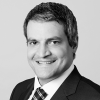A decision by the German Federal Court of Justice from October 2021 can be seen as a positive litmus test for the patenting of computer-implemented inventions in Germany. The decision is also crucial for the most important key technologies, such as artificial intelligence and quantum computing.
In the decision X ZR 98/19 of October 7 2021, the German Federal Court of Justice (Bundesgerichtshof – BGH) once again had to decide on the issue of patenting software.
Although the BGH did not give the decision a title or a guiding principle in terms of a headnote, there is more to learn from this decision than from many other more frequently cited decisions that receive more media attention. Studying the decision offers the opportunity to learn to what limits the BGH currently considers software to be patentable.
The patent in suit
With the present decision, the BGH confirmed a decision by the German Federal Patent Court to uphold patent DE 600 31 088.4. The patent in suit relates to a method for presenting data stored in a data storage device of a server, where a unidirectional or one-way data path is used, and no backtracking is possible.
Claim 1 of the patent in suit reads as follows:
"Method for presenting data stored in a data storage device (2) on a data server (3) for a user, wherein the user accesses the data server via a network, wherein in the process between the access to the server and the presentation of the data at least one data path is used, over the control data associated with the selection of data are to be sent, wherein the at least one data path is unidirectional.”
Analysis of the claim
First, it is remarkable that the BGH considers the question of the technical character of the features of the above patent claim to be so clear and positive. The BGH therefore considers a deeper discussion, or any further reference to the corresponding case law and the principles established therein, to be dispensable.
Second, it is important that the BGH interprets the criterion for the technical character – that a data processing program takes into account the technical circumstances of the data processing system – very broadly.
Claim 1 of the patent in suit basically exhausts itself in the connection and consideration of a unidirectional data path, and it seems that this very limited connection to the data processing system was sufficient to render the subject matter of this claim technical.
Particularly for future technologies such as artificial intelligence and quantum computing (although for the latter the question of hardware – superconductors versus ion traps – is by no means decided yet), it seems to be advantageous if the interaction of hardware and software does not have to be described in too much detail in the claim.
Therefore, the approach of the BGH of not imposing a high requirement on the linkage of software and hardware seems to be very advantageous for patent applications in the fields of artificial intelligence and quantum computing.
Simon Lud
Partner, Maiwald
E: lud@maiwald.eu











